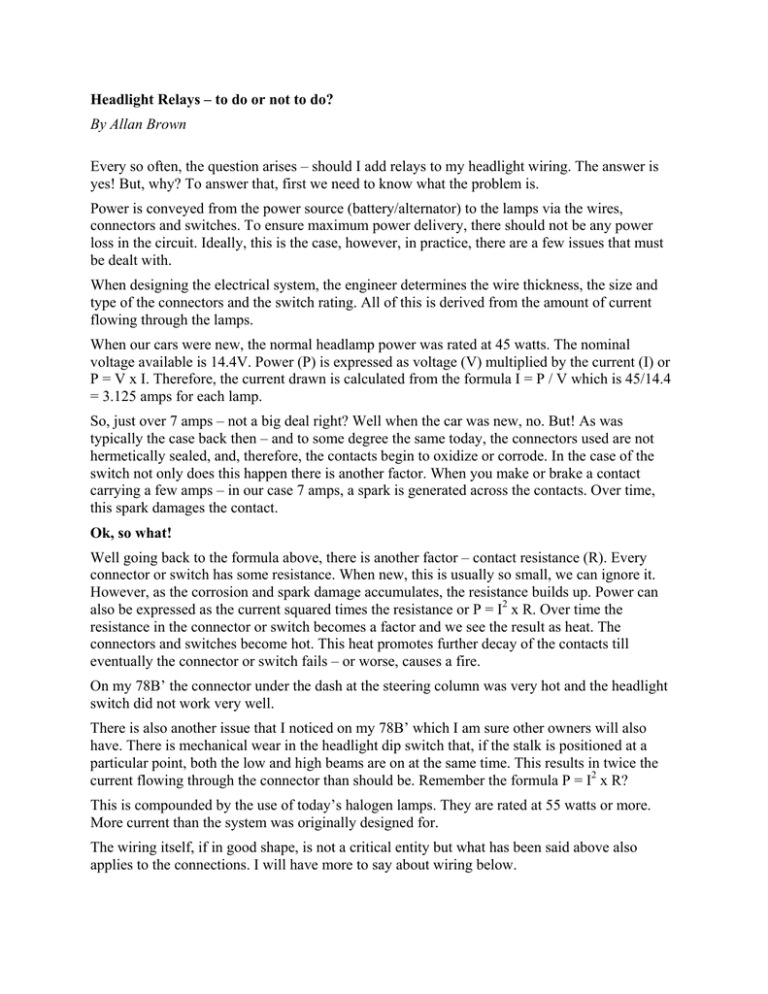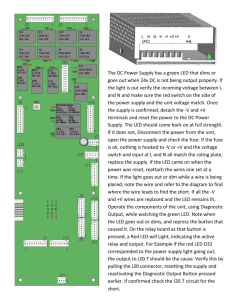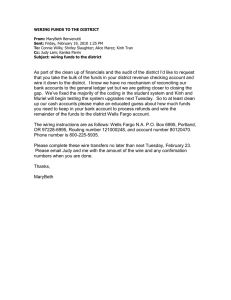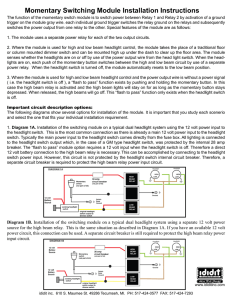Headlight Relays - to do or not to do?
advertisement

Headlight Relays – to do or not to do? By Allan Brown Every so often, the question arises – should I add relays to my headlight wiring. The answer is yes! But, why? To answer that, first we need to know what the problem is. Power is conveyed from the power source (battery/alternator) to the lamps via the wires, connectors and switches. To ensure maximum power delivery, there should not be any power loss in the circuit. Ideally, this is the case, however, in practice, there are a few issues that must be dealt with. When designing the electrical system, the engineer determines the wire thickness, the size and type of the connectors and the switch rating. All of this is derived from the amount of current flowing through the lamps. When our cars were new, the normal headlamp power was rated at 45 watts. The nominal voltage available is 14.4V. Power (P) is expressed as voltage (V) multiplied by the current (I) or P = V x I. Therefore, the current drawn is calculated from the formula I = P / V which is 45/14.4 = 3.125 amps for each lamp. So, just over 7 amps – not a big deal right? Well when the car was new, no. But! As was typically the case back then – and to some degree the same today, the connectors used are not hermetically sealed, and, therefore, the contacts begin to oxidize or corrode. In the case of the switch not only does this happen there is another factor. When you make or brake a contact carrying a few amps – in our case 7 amps, a spark is generated across the contacts. Over time, this spark damages the contact. Ok, so what! Well going back to the formula above, there is another factor – contact resistance (R). Every connector or switch has some resistance. When new, this is usually so small, we can ignore it. However, as the corrosion and spark damage accumulates, the resistance builds up. Power can also be expressed as the current squared times the resistance or P = I2 x R. Over time the resistance in the connector or switch becomes a factor and we see the result as heat. The connectors and switches become hot. This heat promotes further decay of the contacts till eventually the connector or switch fails – or worse, causes a fire. On my 78B’ the connector under the dash at the steering column was very hot and the headlight switch did not work very well. There is also another issue that I noticed on my 78B’ which I am sure other owners will also have. There is mechanical wear in the headlight dip switch that, if the stalk is positioned at a particular point, both the low and high beams are on at the same time. This results in twice the current flowing through the connector than should be. Remember the formula P = I2 x R? This is compounded by the use of today’s halogen lamps. They are rated at 55 watts or more. More current than the system was originally designed for. The wiring itself, if in good shape, is not a critical entity but what has been said above also applies to the connections. I will have more to say about wiring below. Fine, so what can we do about it? By using a relay we move the high current switching away from the headlight switch so that the switch only sees a small current – in the range of a few thousands of an amp. This solves part of the problem. You will need two relays – one for low beam and one for high beam. The relays are hermetically sealed and are available for a few dollars from any auto store. Now for a “While you are at it”. Typically, the wiring on a car is rated for a nominal current and not necessarily for any peak current that may occur. Due to the “nature of the beast”, lamps take more current when they are cold compared to when they are hot. The wiring is usually rated for the “hot” value. This means the wire may be thinner than you would expect it to be. Thinner wire translates into cost savings and weight savings. As the wiring harness ages, corrosion can also “thin out” the wire resulting in hot spots. If you install a new thicker wire in your car, you can connect it to the relay. This will solve the heat problem at the connector under the dash as the connector will only see the current needed to operate the relay. Another “While you are at it”. The original headlight wire is connected directly to the battery circuit. There are no fuses or circuit breakers. What I did in my car was to install a 30 amp fuse + holder and a new 8 AWG wire. I mounted the fuse holder on the car body near the existing fuse block. I ran the new wire from the starter terminal to the fuse holder. From the other side of the fuse holder, I ran two wires – one for each relay – not really required, but I did it anyway. I mounted the relays up front near to the headlamps. I then connected the existing wires to the relays and headlamps. All the connections were coated with white grease to prevent corrosion. The end result is my headlight switch, dip switch and associated connectors only handle the current required to operate the relays. The power for the headlamps comes from the new fuse via the new, thicker, wire. This also allows a higher voltage to reach the lamps by eliminating the voltage drops in the original switches, connectors and dashboard wiring. That’s great son, how do you do this? The corresponding wire from the Headlight Dip Switch is disconnected from the lamps and taken to Pin 86 of a standard ISO automobile relay. The two headlamps are connected together, as normal, and taken to Pin 87 of the relay. Pin 85 goes to ground while Pin 30 goes to the new 30A fuse. If you wish to, a separate wire from the fuse can be used for each relay and can be colourcoded the same as the corresponding headlamp wire. This is what I did. In my case, the relays are mounted on the radiator support panel at the front of the car. The power to the fuse is via a new 8AWG red wire taken from the starter terminal. If you wish to do so, you can install 15 Amp fuses in each lamp beam circuit. These fuses should be placed adjacent to the new 30 Amp fuse. Make sure the connections are clean, tight and covered with white grease. So, now you know what the problem is and how you can fix it. OK, if you really insist, more “While you are at its”. I installed fog lamps and associated relay and also connected them to the 30A fuse. I mounted the switch on the steering column on the opposite side from the headlight switch. Modified Headlight Wiring Standard ISO automobile relay





